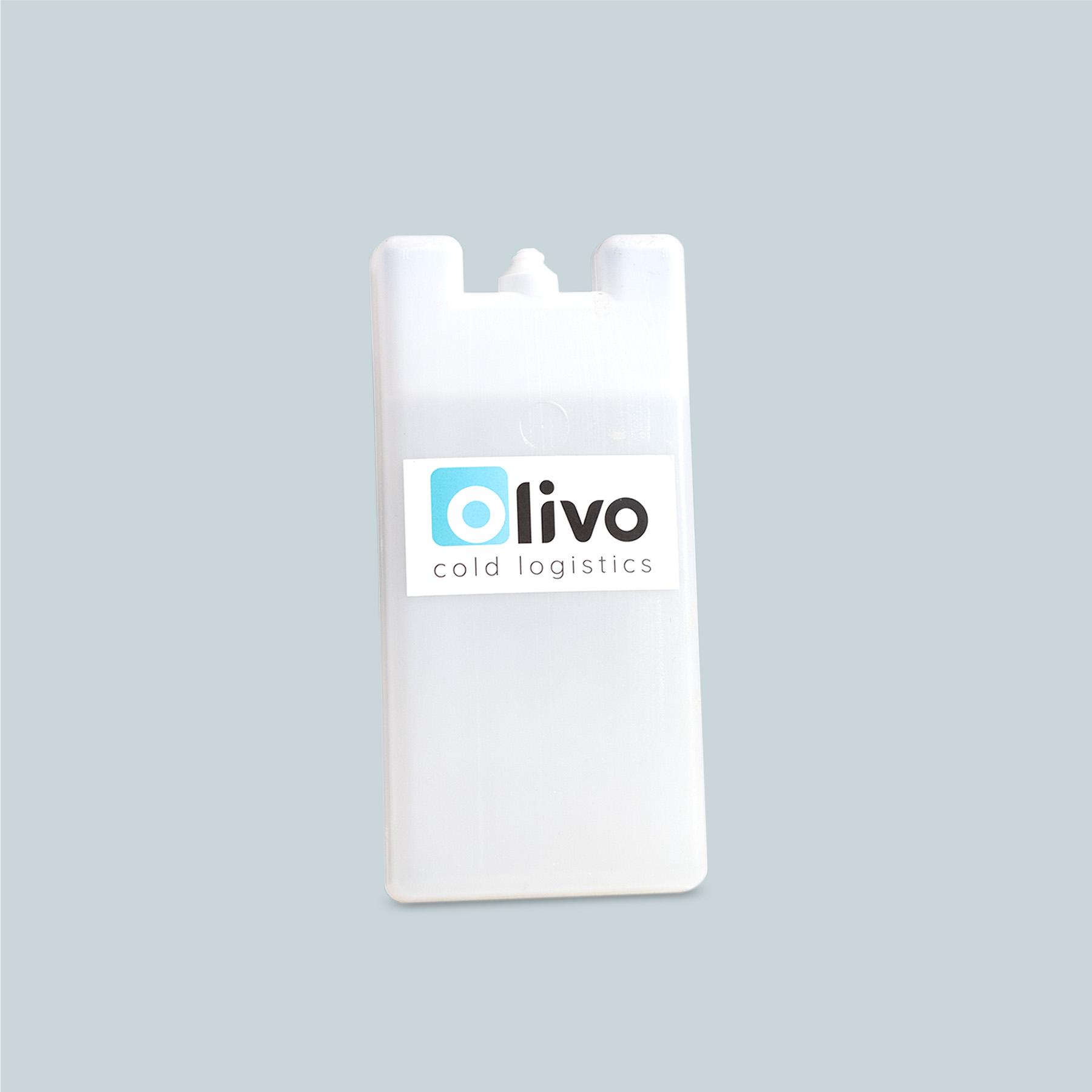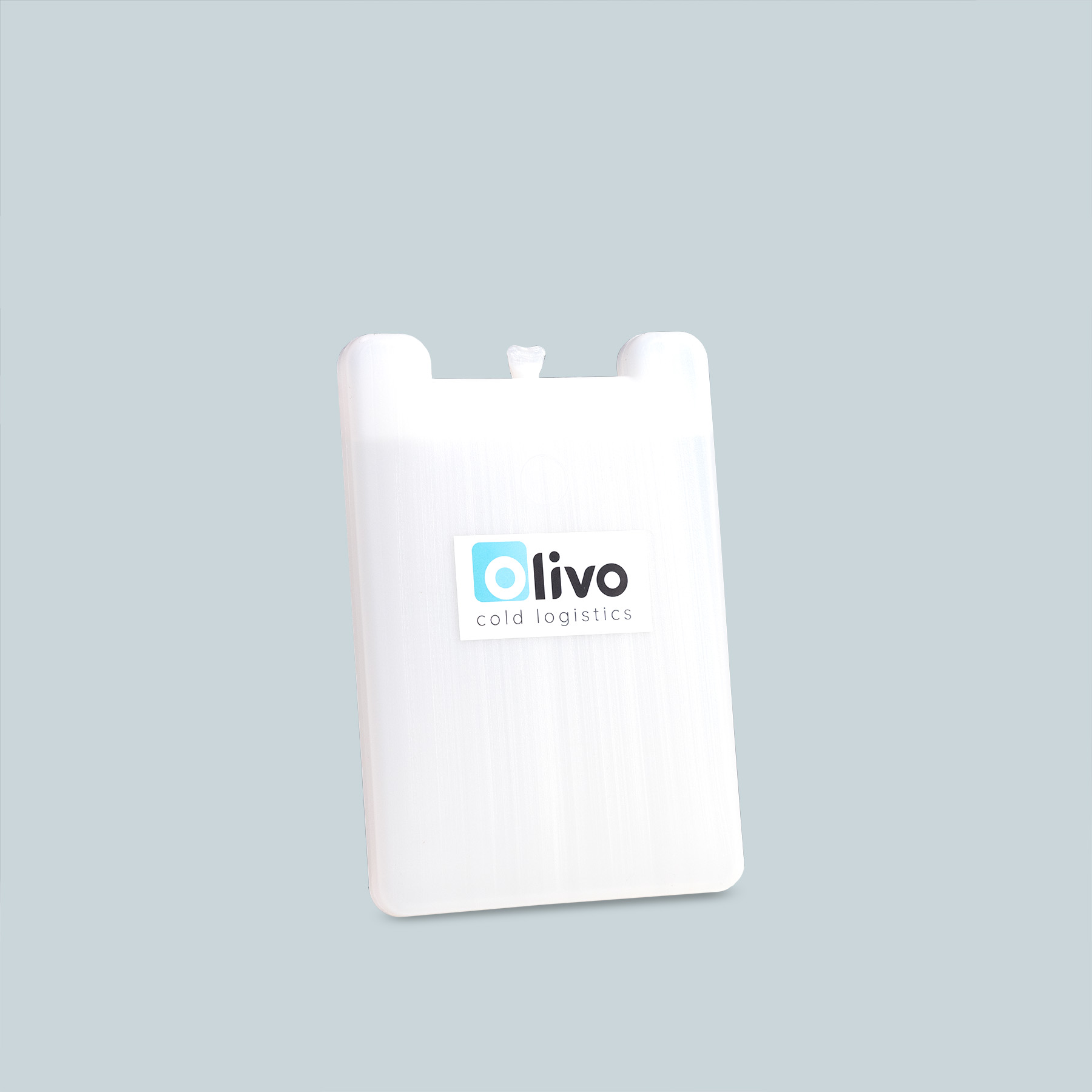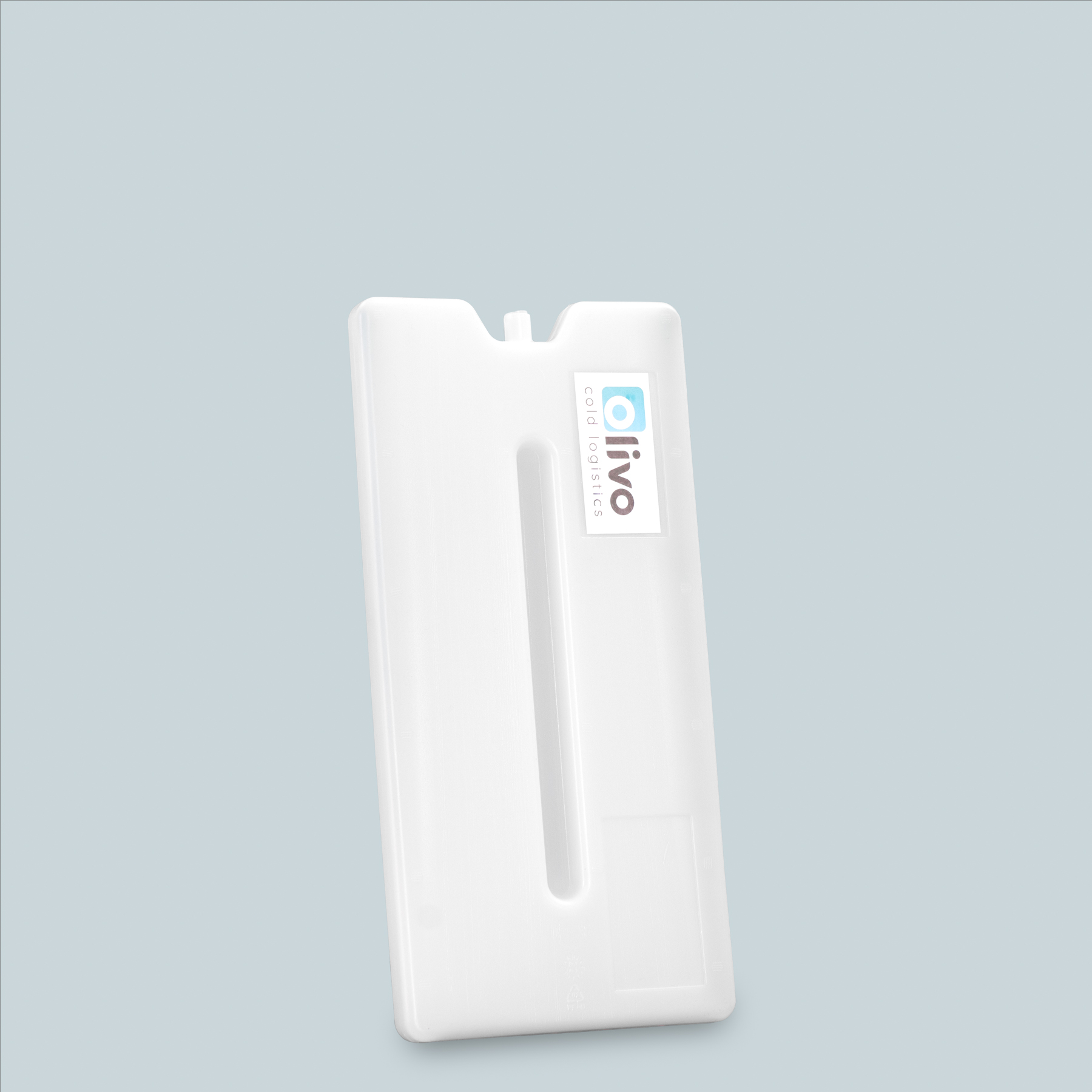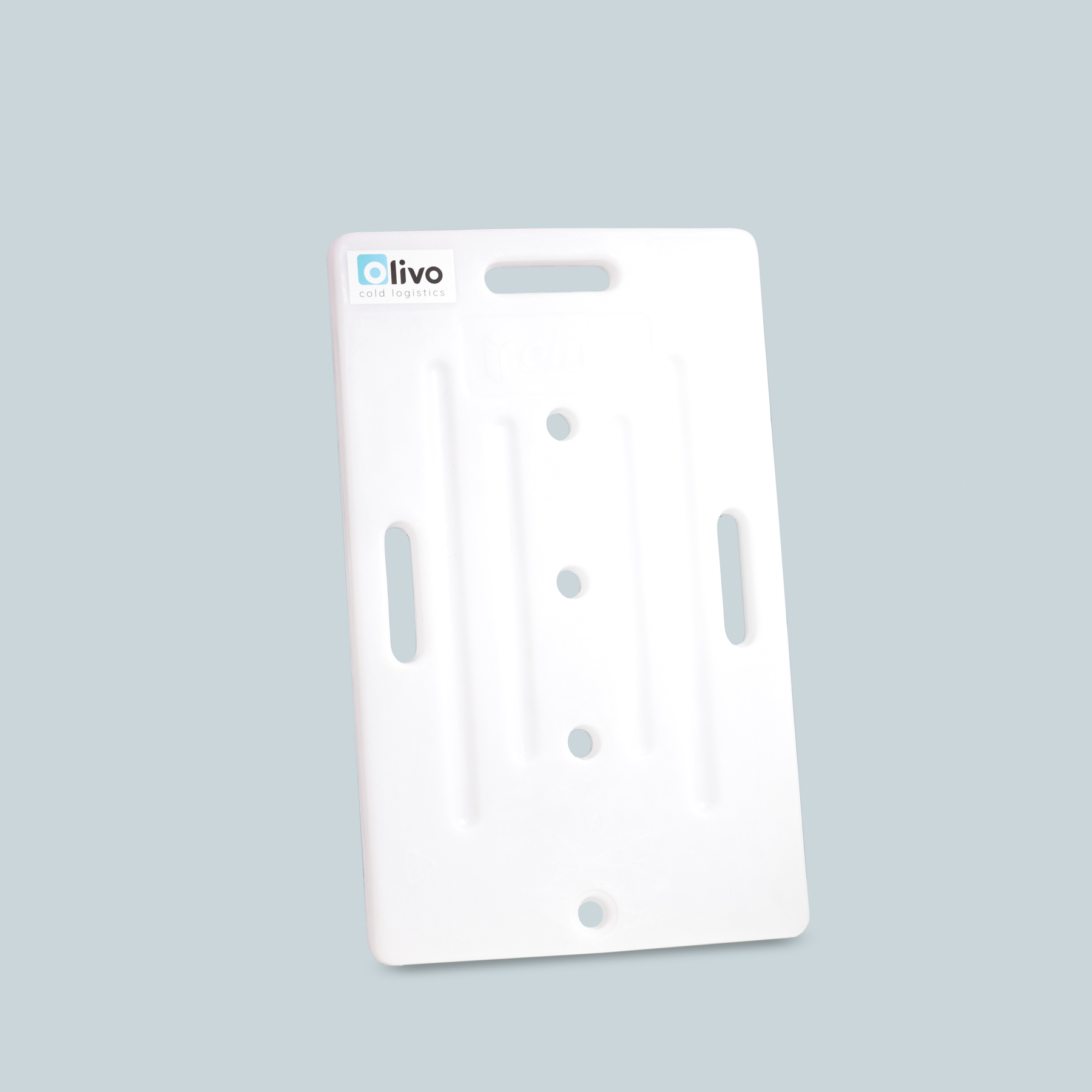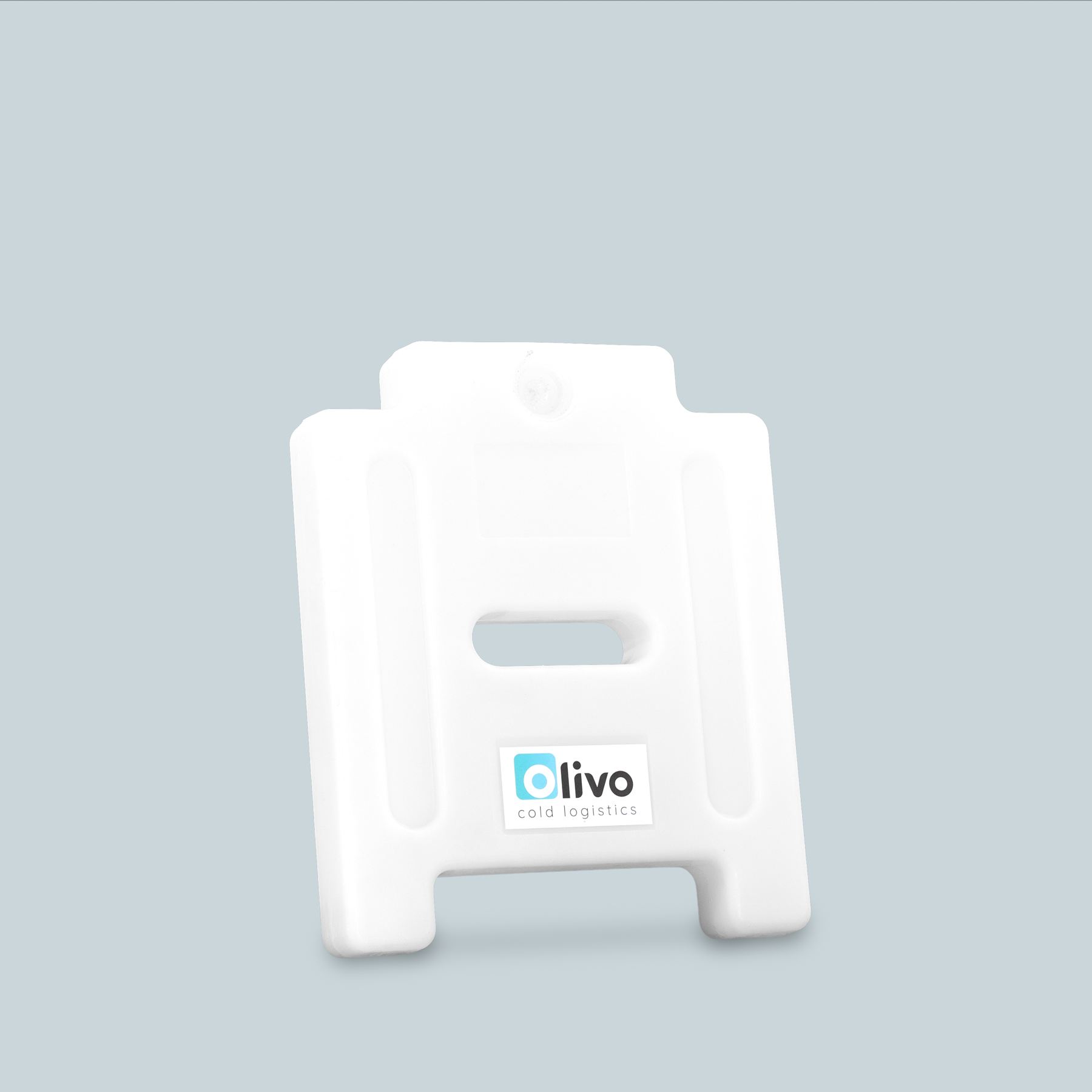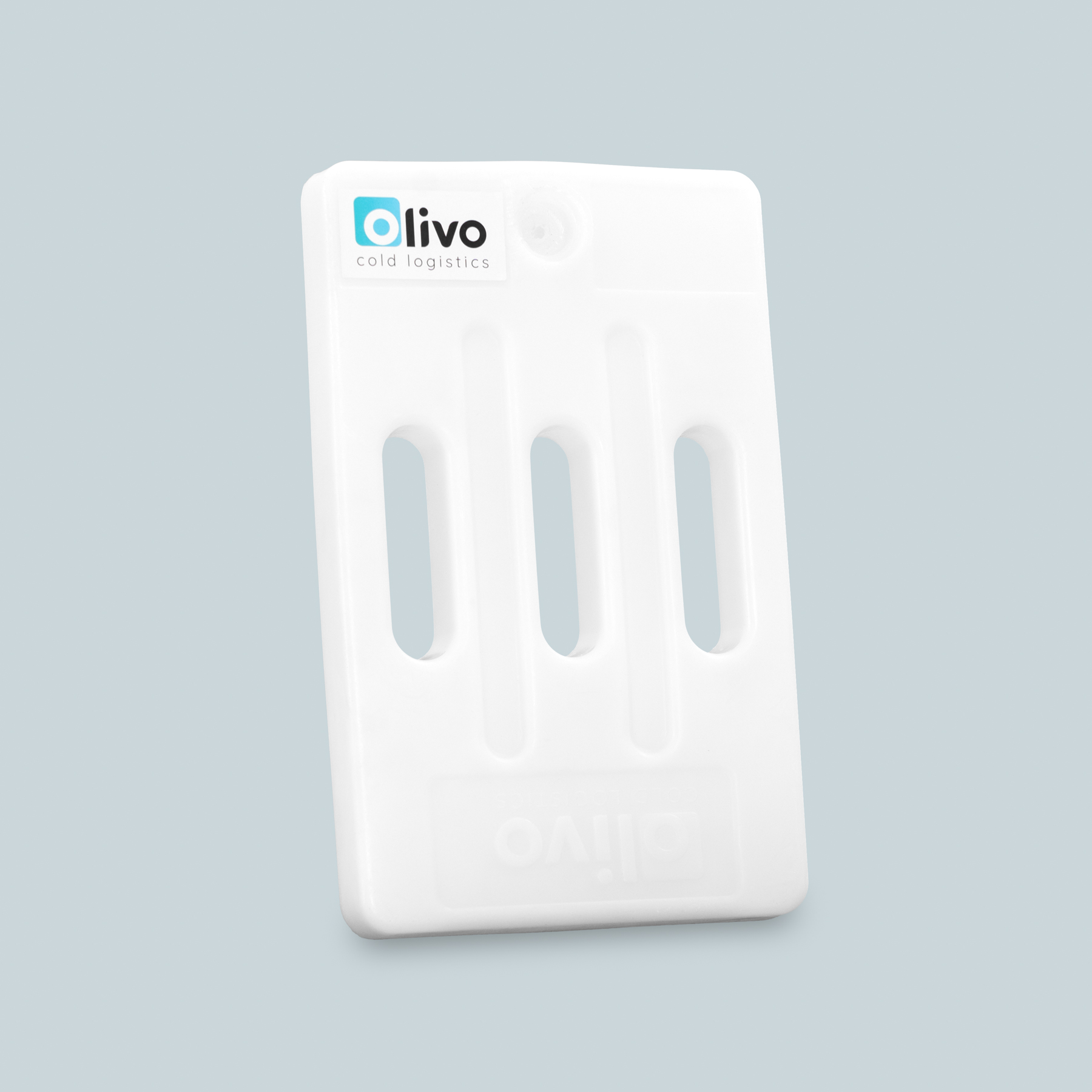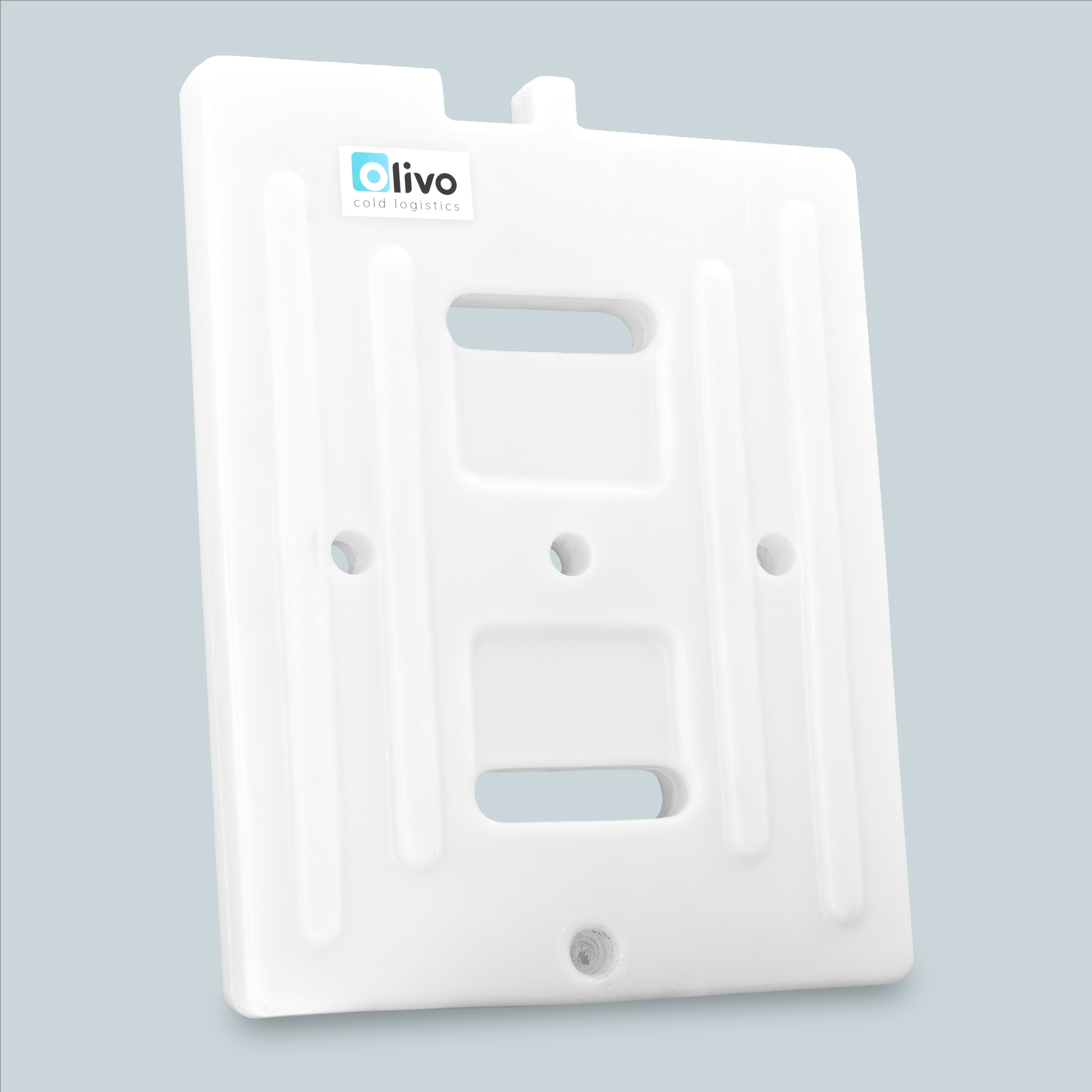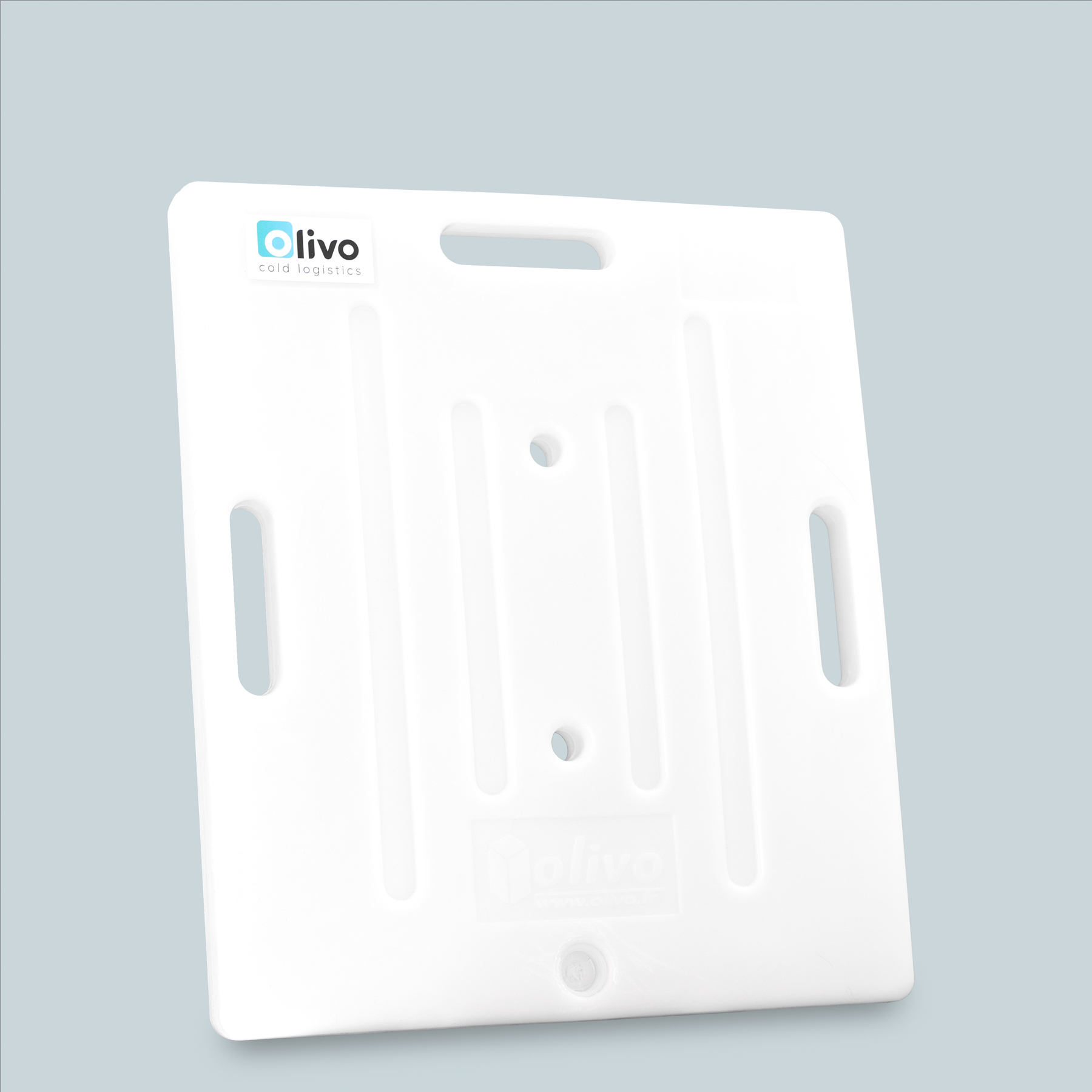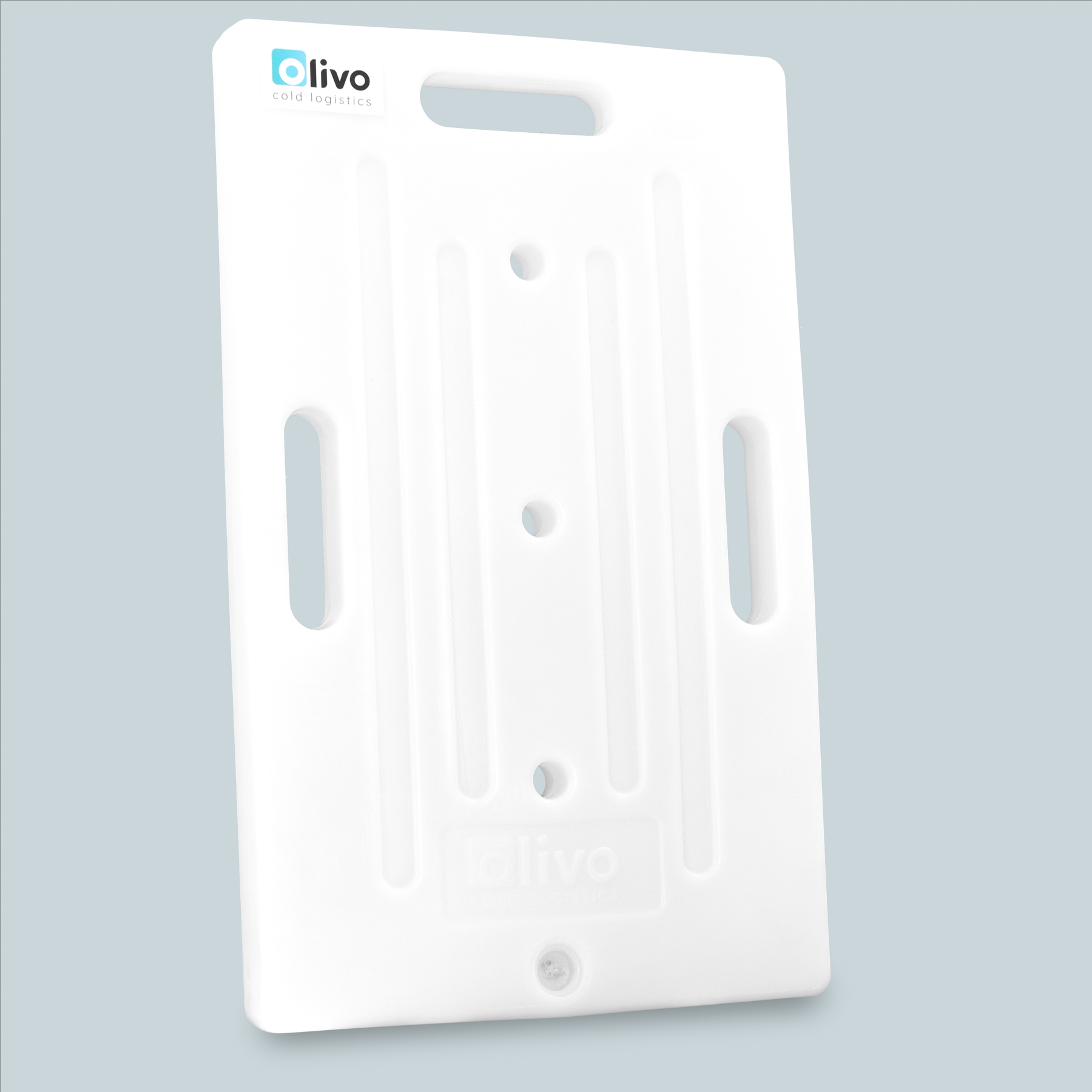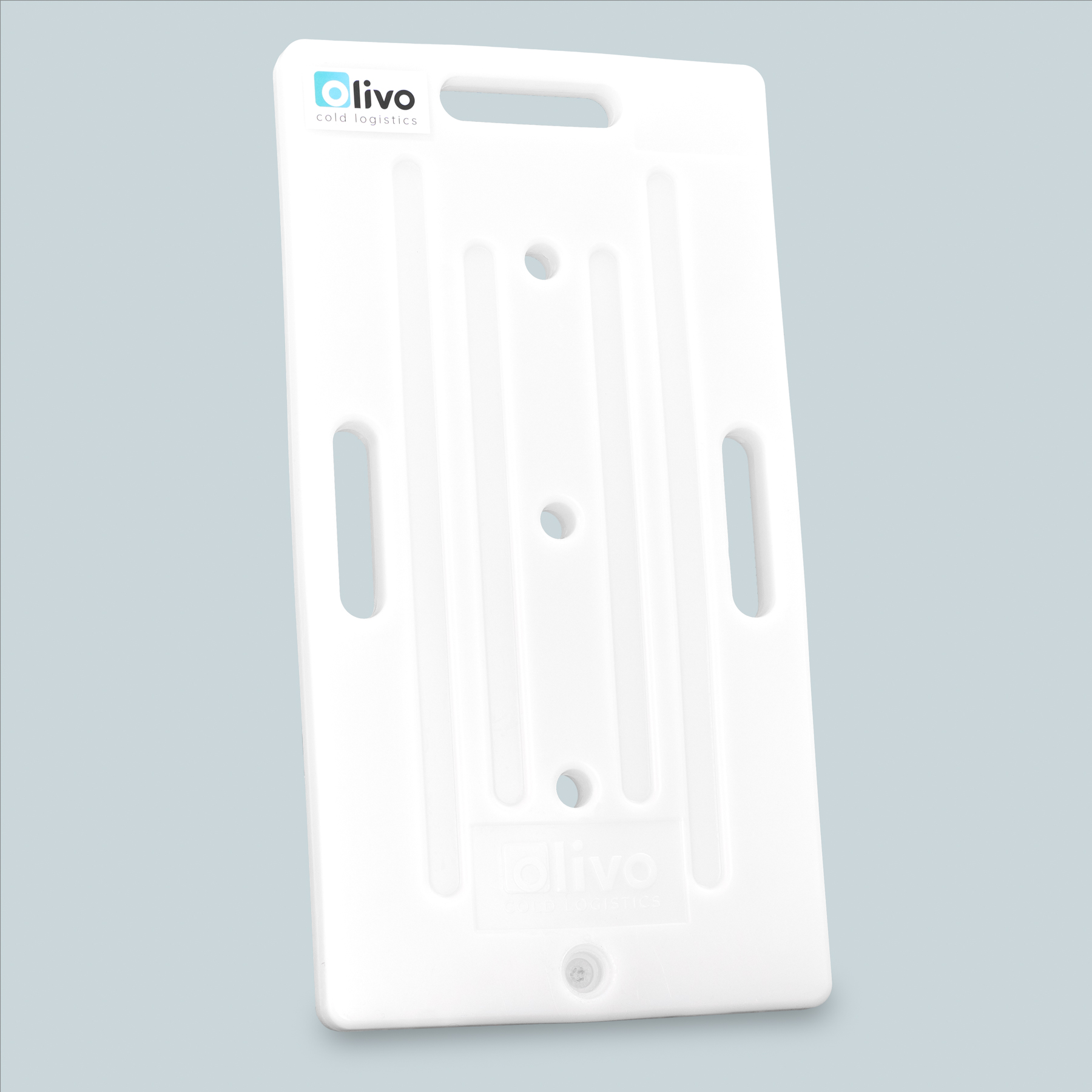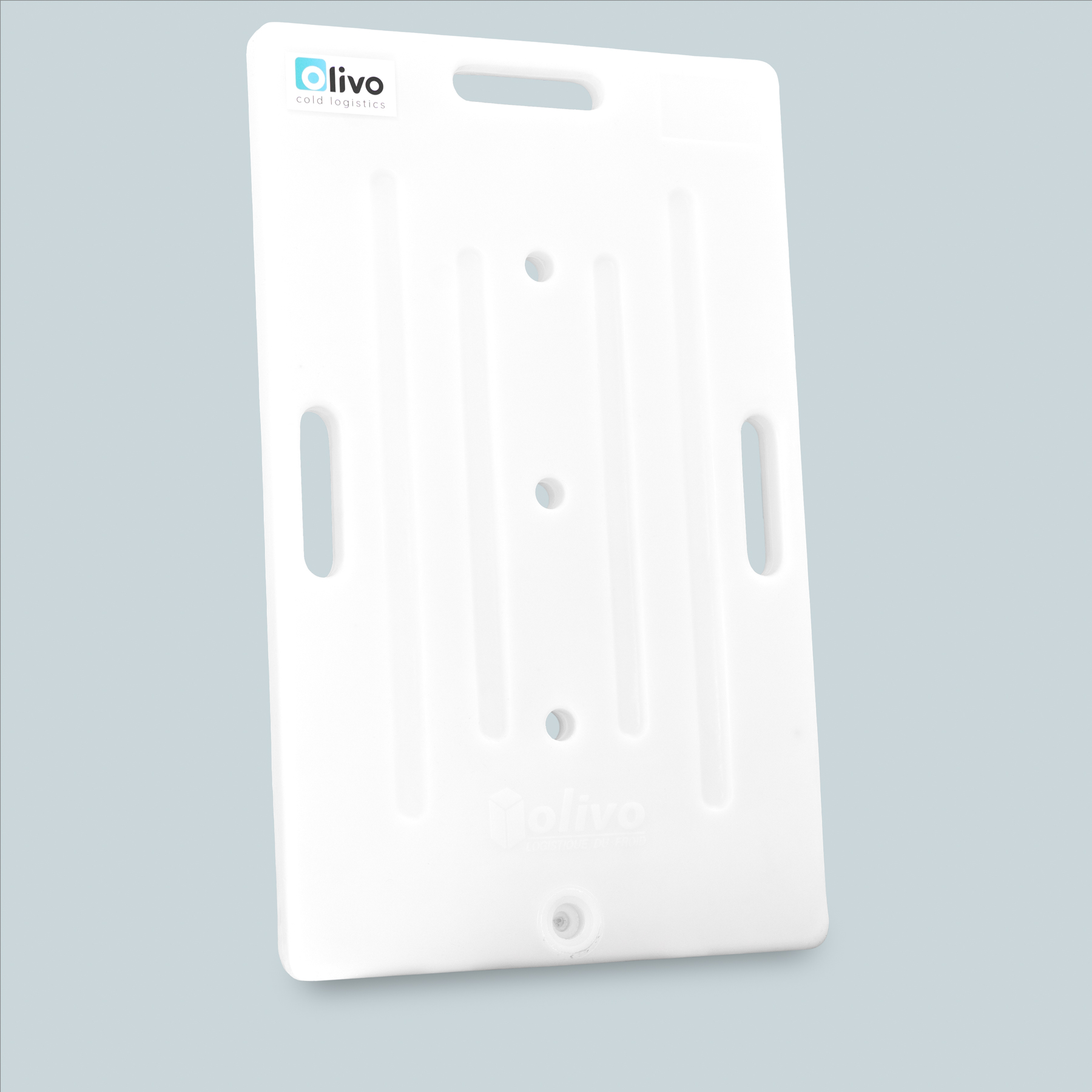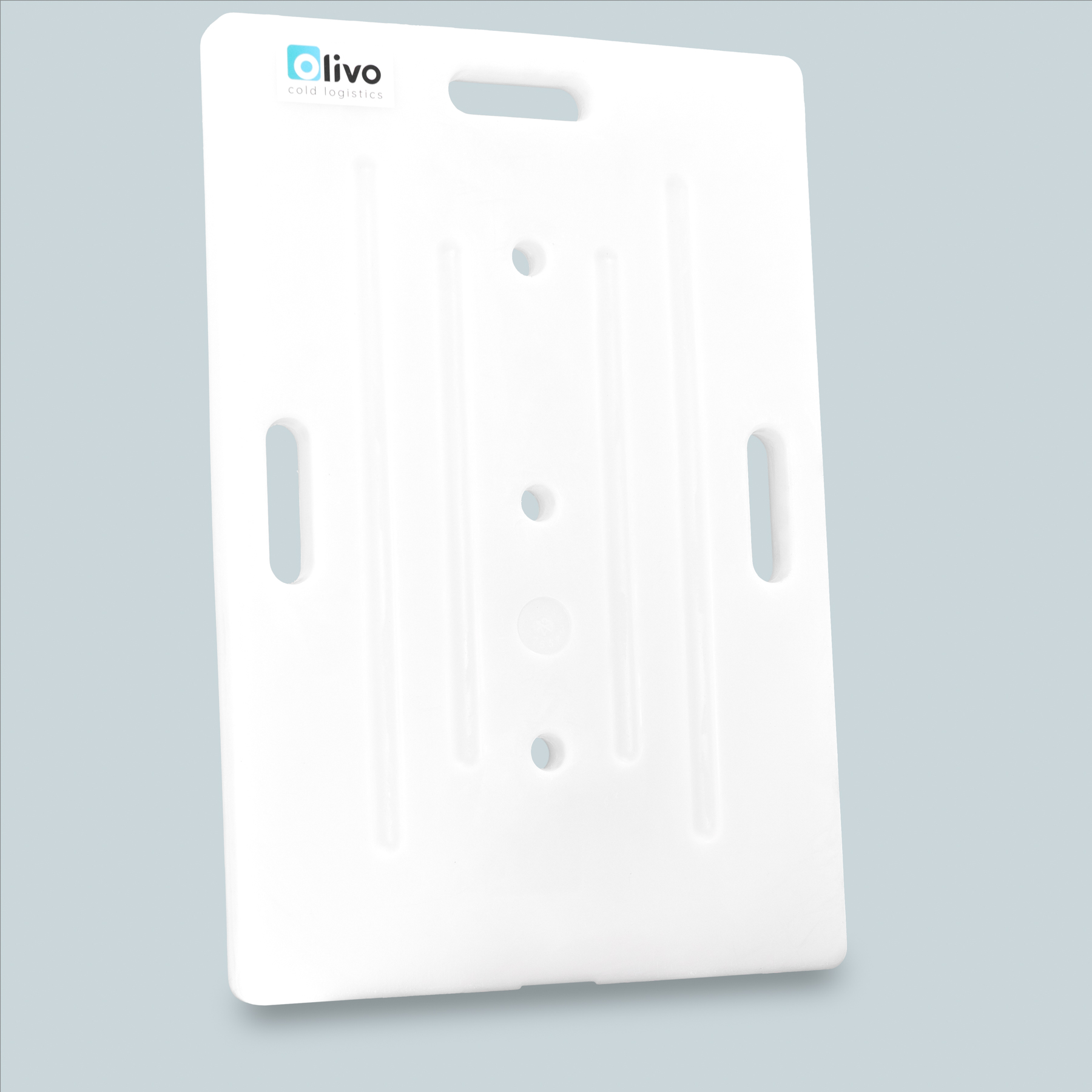Eutectic gel
Cooling liquid
A cooling liquid is a eutectic solution made up of water and mineral salts. The quality and concentration of the mineral salts can modify the freezing point of the water. This allows the temperature of the eutectic plates placed in the isothermal boxes to be adapted. The quantity of eutectic plates will be determined by the duration of transport, the type of product being transported and its packaging.
Water solidifies by freezing at a temperature of 0°C or below. On the other hand, a eutectic solution has a freezing point equal to -5°C from its melting point. Therefore, a eutectic plate with a melting point of -21°C solidifies by freezing at a temperature equal to or below -26°C.
The liquid refrigerant is placed in eutectic plates, commonly known as refrigerant packs.
Our range of eutectic plates

Cooling gel
Viscous agents are often added to the eutectic liquid to give it a more pasty consistency. This is known as cooling gel (sometimes called cooling pack).
During the manufacturing phase, the gel is used to homogenise the eutectic product in the isothermal packaging: the salts are well distributed in the liquid and the concentration is homogeneous to obtain a quality eutectic gel.
The gel state improves the thawing time of the bearing, or more precisely, the time during which it will absorb the heat of a food or other product, and the temperature returned is more stable in isothermal eutectic gel packaging.
Single-use cooling gel – cold pack
The viscosity of cooling gels (sometimes called cooling packs) in isothermal packaging can vary considerably during manufacture. A thicker cooling gel is generally used for single-use flexible cooling bags. The viscosity of the eutectic gel adds strength and geometric stability to the flexible bag, making it a good cold accumulator. A ‘pulpy’, coloured eutectic gel cooler bag is also nicer to insert in your high-density polyethylene container.
Reusable cooling gel
Cold accumulators made in Olivo are reusable and come in the form of a rigid rotomoulded envelope.
The geometry of the casing is calculated to optimise the heat exchange surface of the eutectic gel refrigerant.
Bridges in the envelope improve heat exchange between the eutectic gel and the convection of the cooling pack or gel pack.
The sheet of eutectic gel acts as a cold accumulator, and freezing it at the right temperature is enough for it to restore the stored energy, i.e. the cold, to the isothermal container.
The different liquids give you the opportunity to choose the temperature of your eutectic plates, an isothermal cold that varies from -21°C to +25°C.
To optimise the preparation of eutectic plates in their freezing cell, it is necessary to store them separately so that the cold released by the eutectic gel circulates evenly around the eutectic gel plate. Placing them on a plate rack is an optimal logistical solution for making them good cold accumulators.
Our solutions of insulated containers
Cold sources designed for your containers

